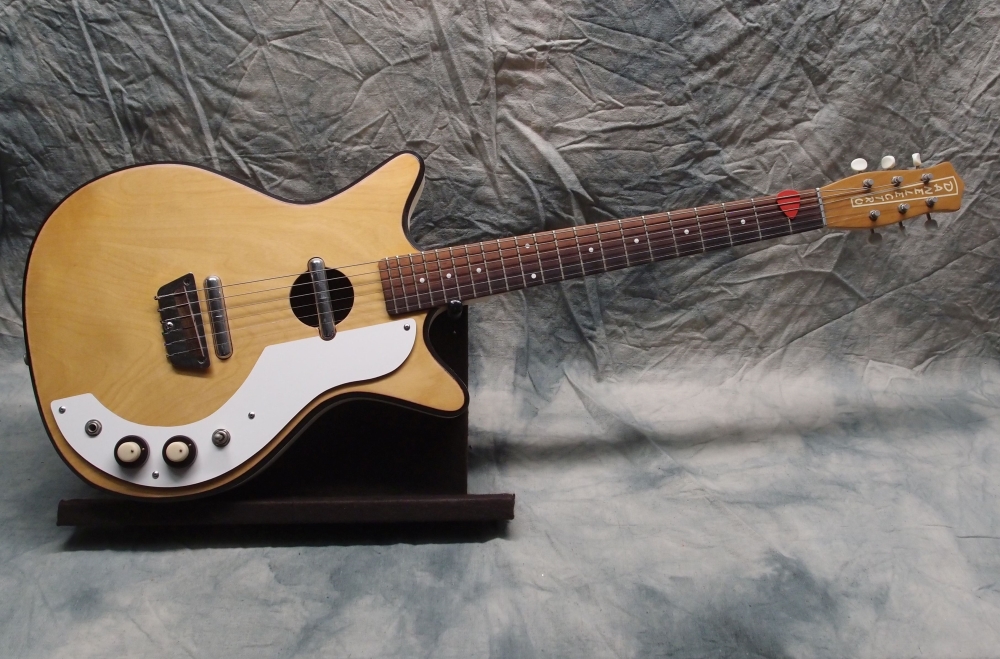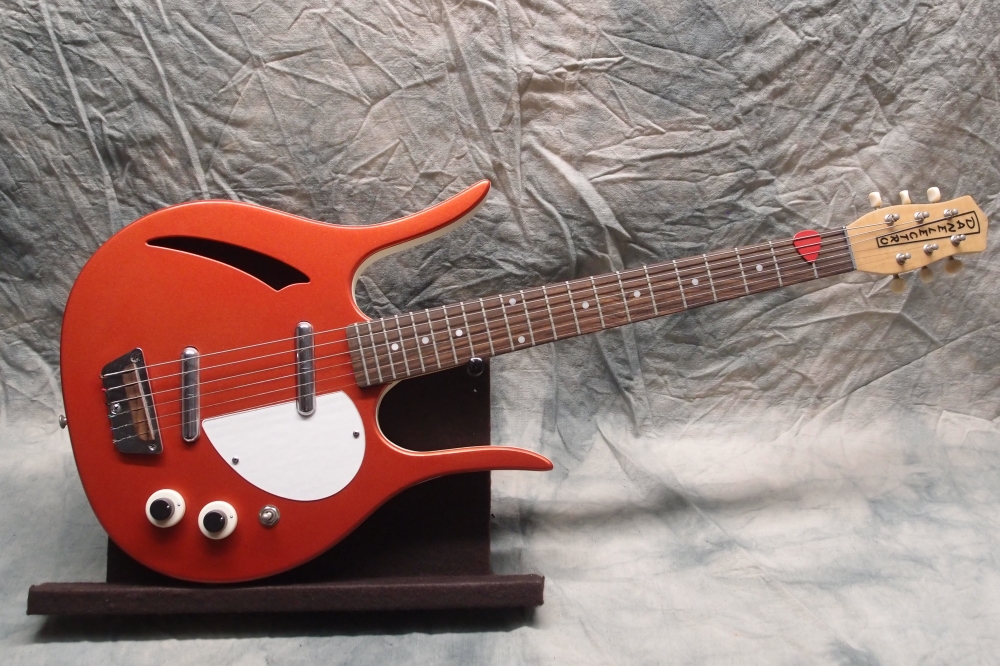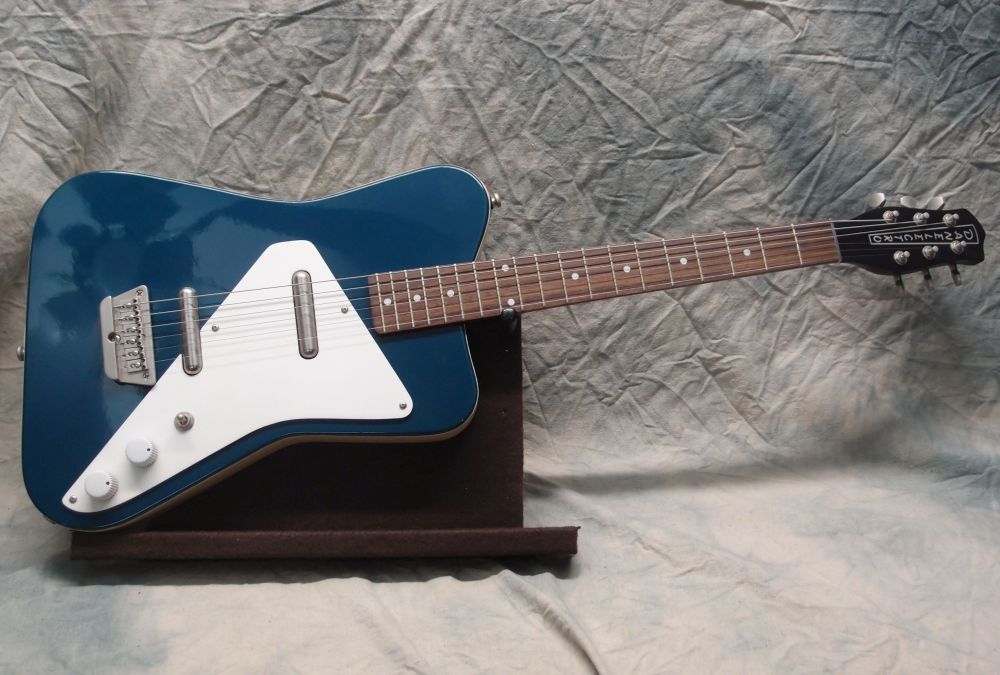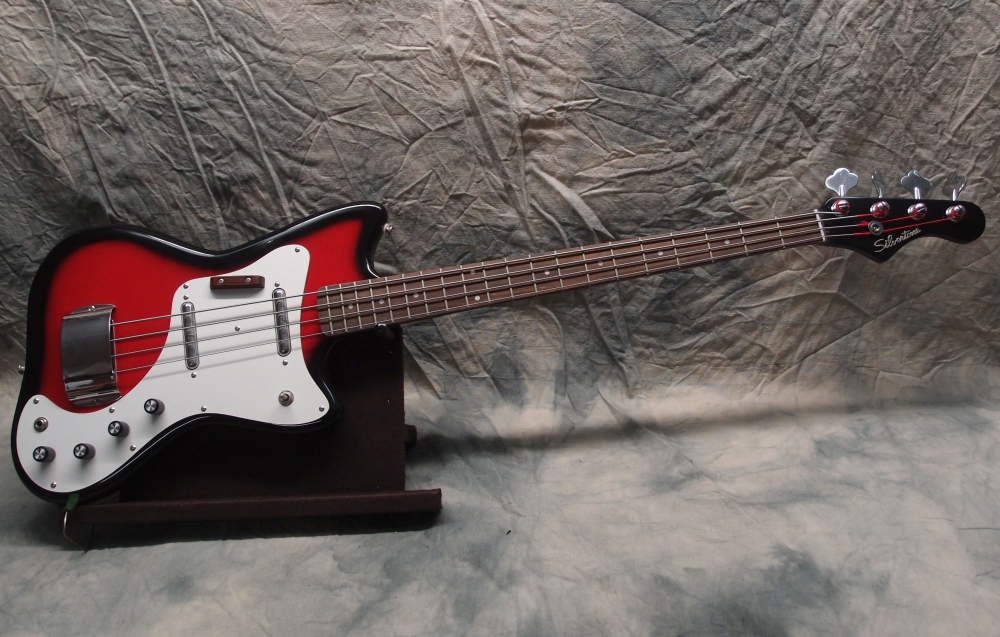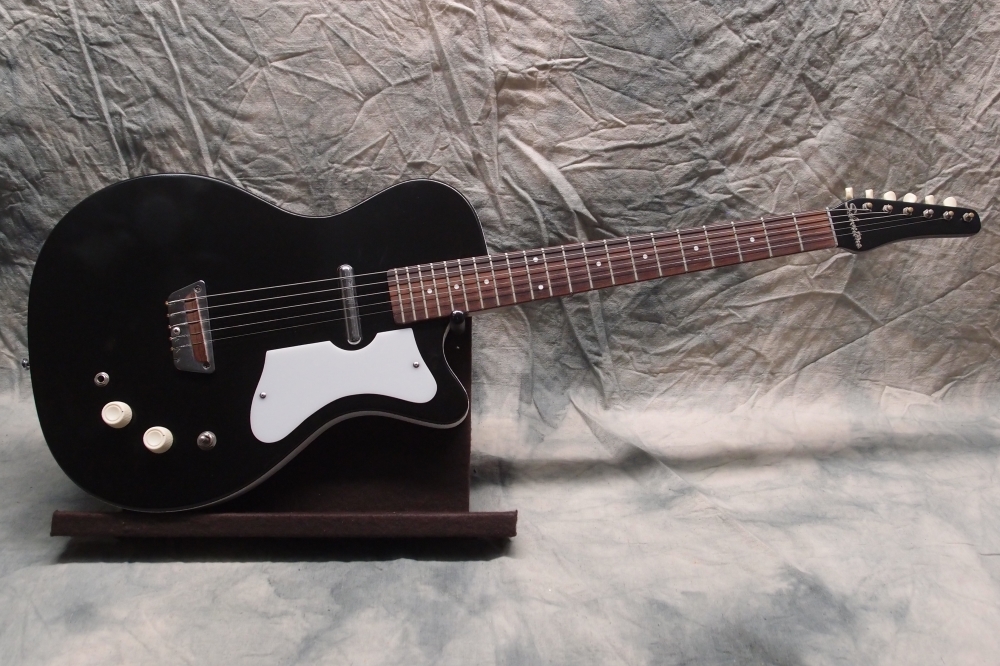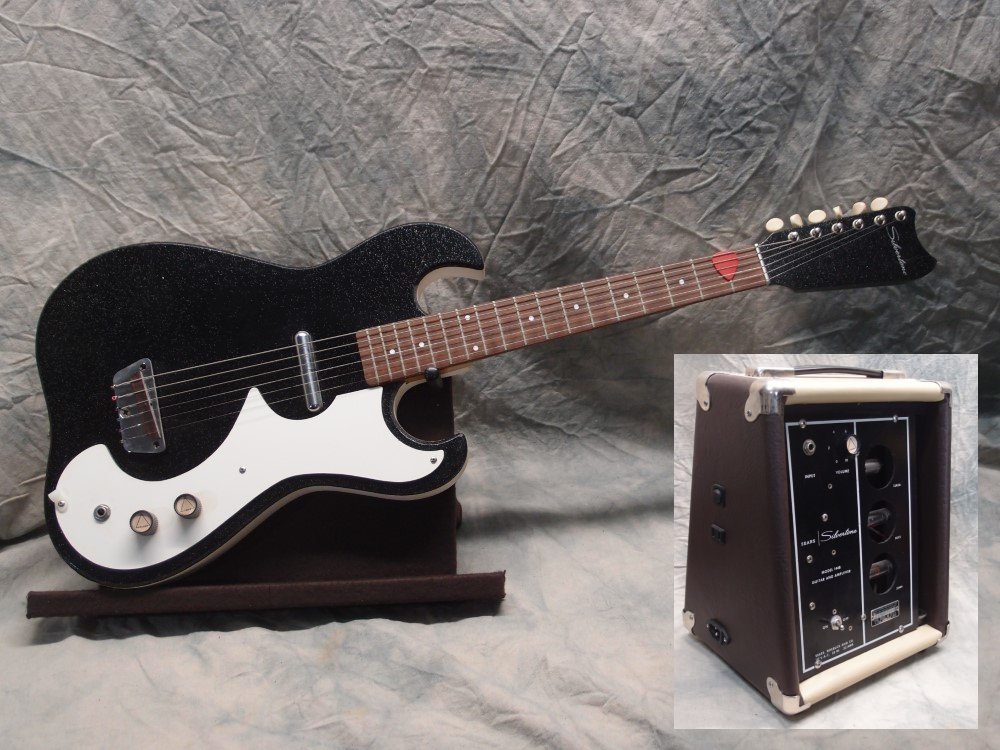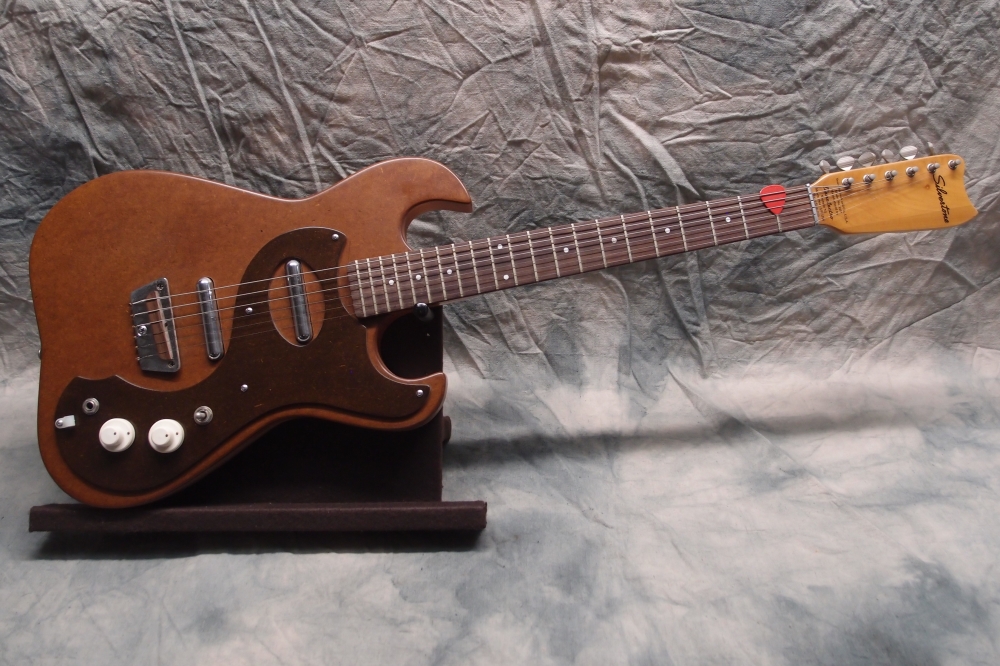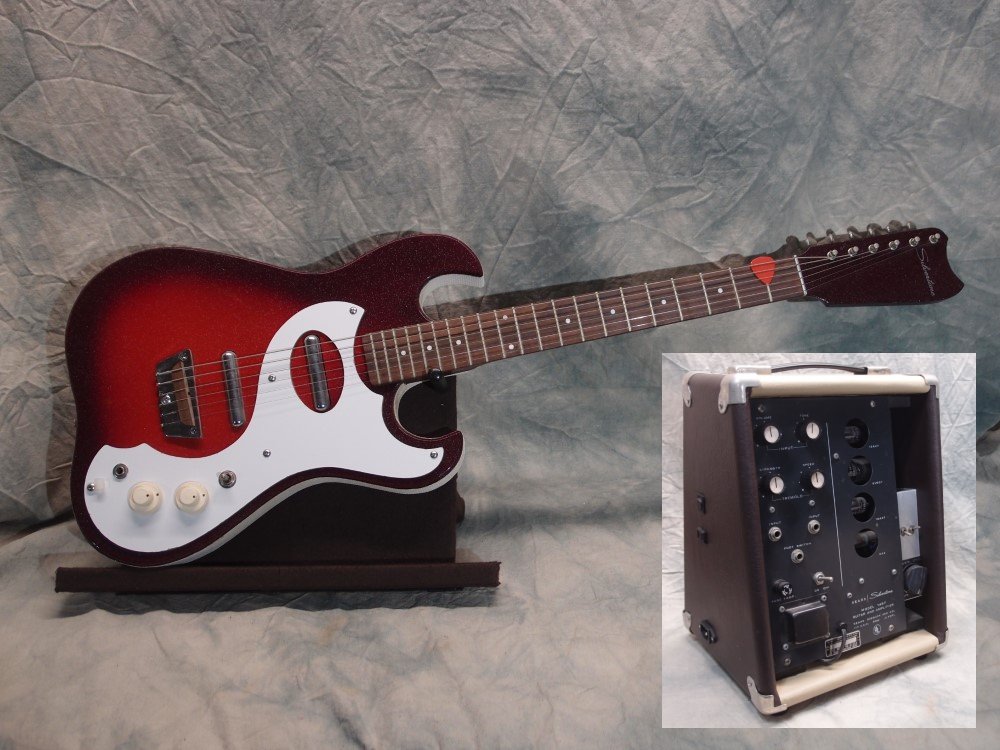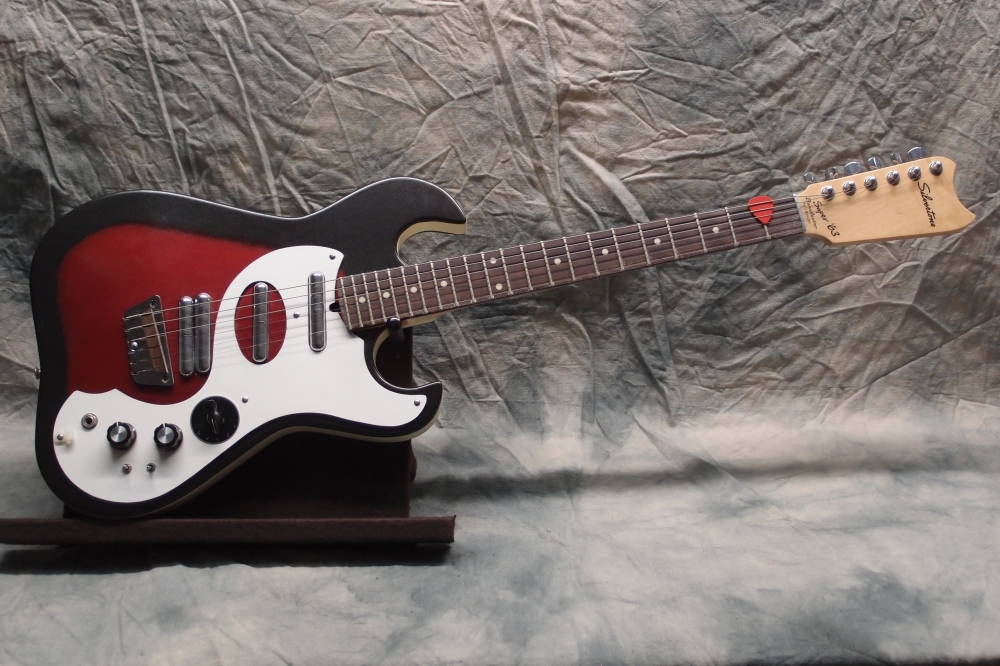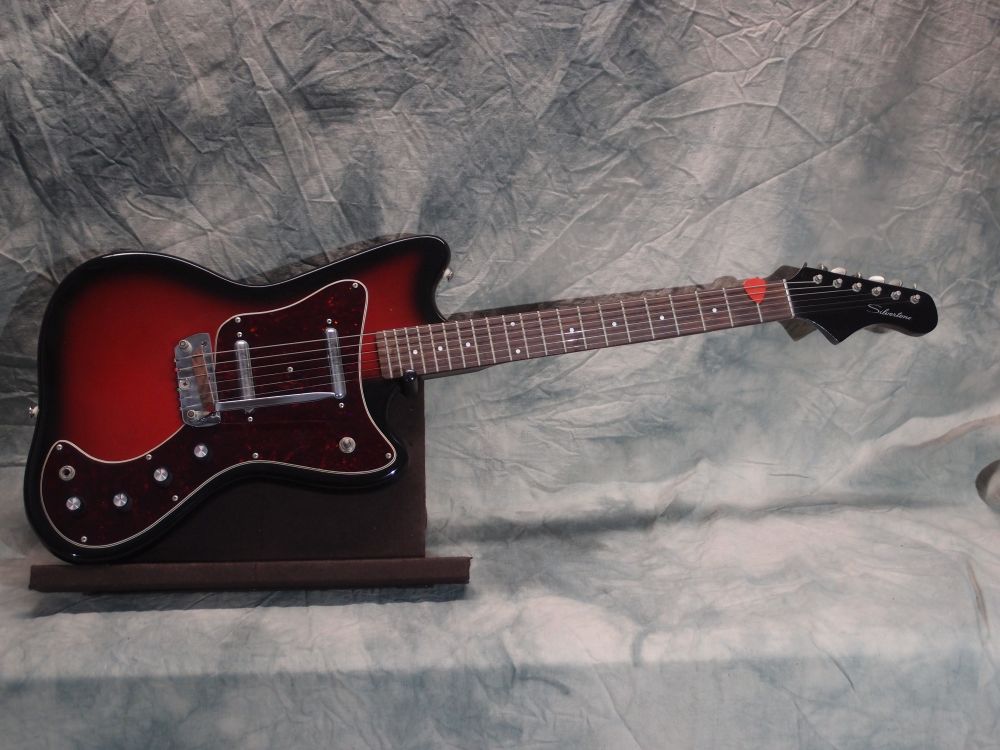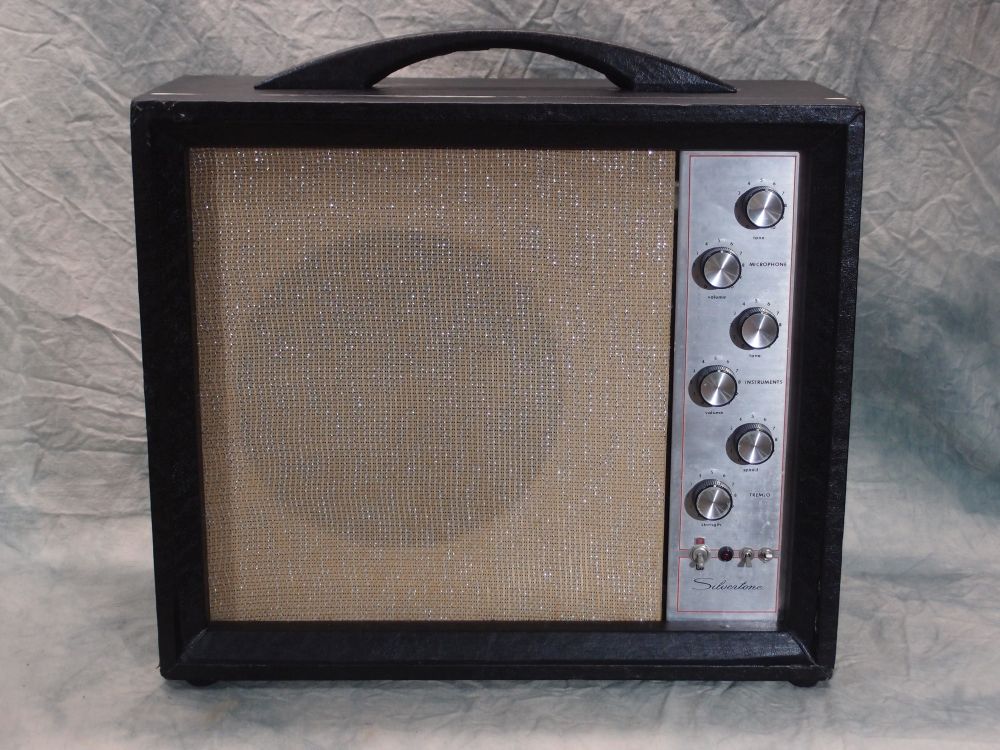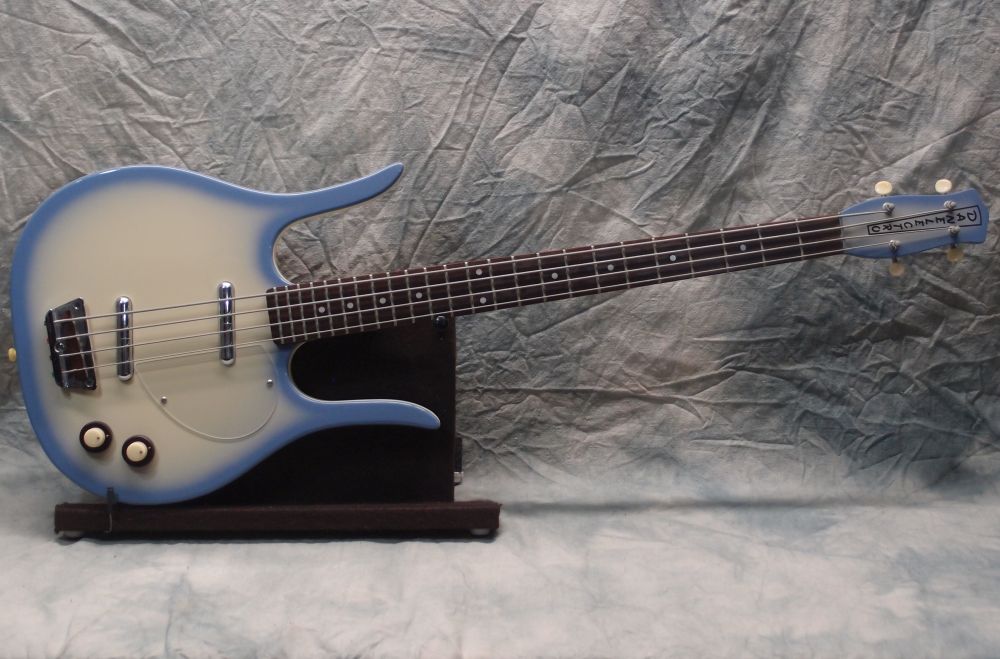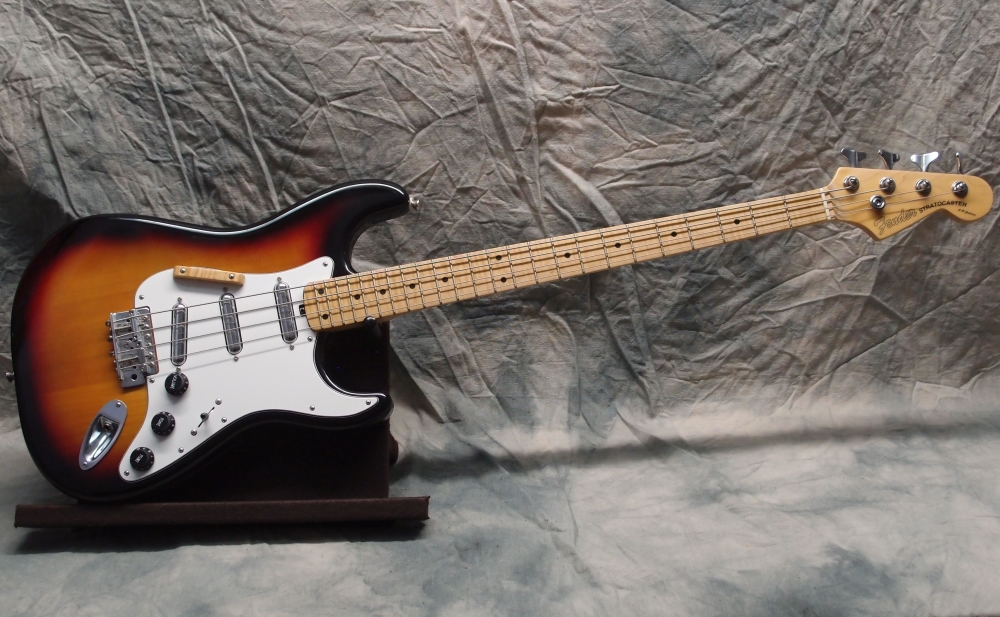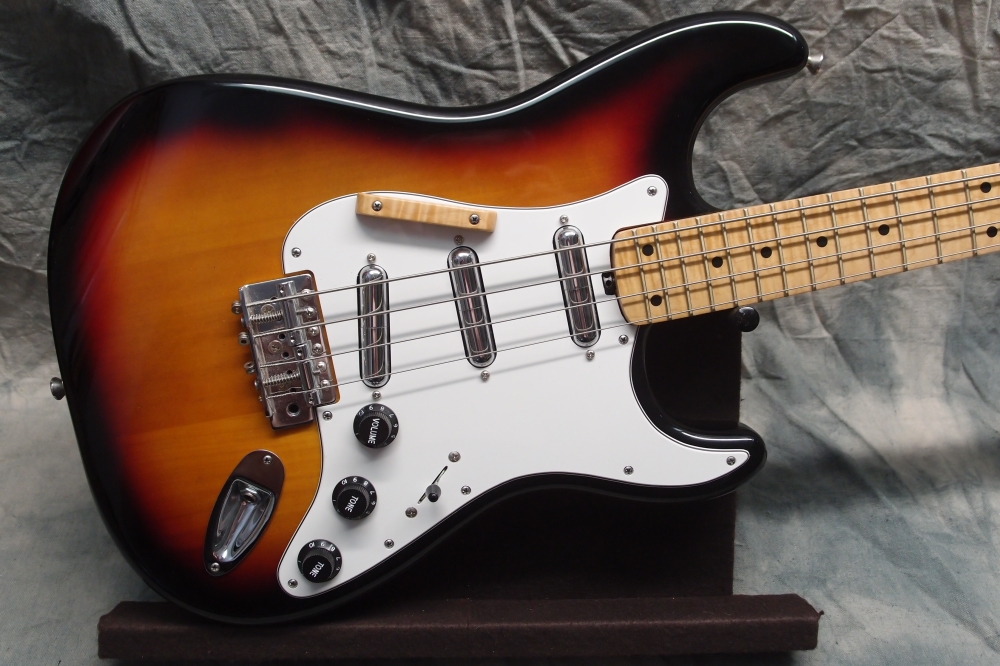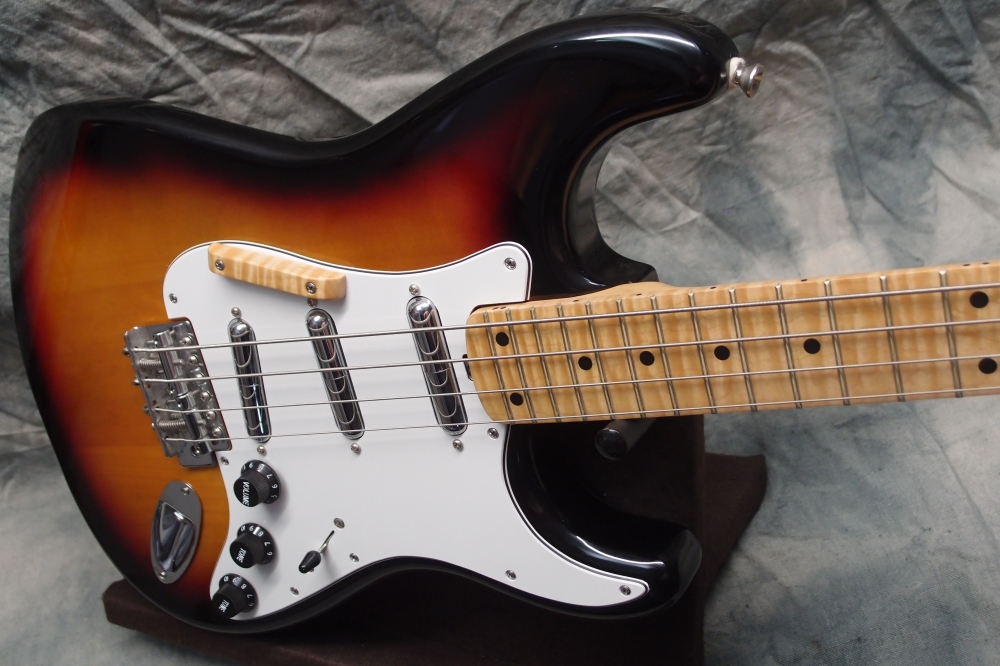Silvertone 1457 Guitar & Amp (2/5)
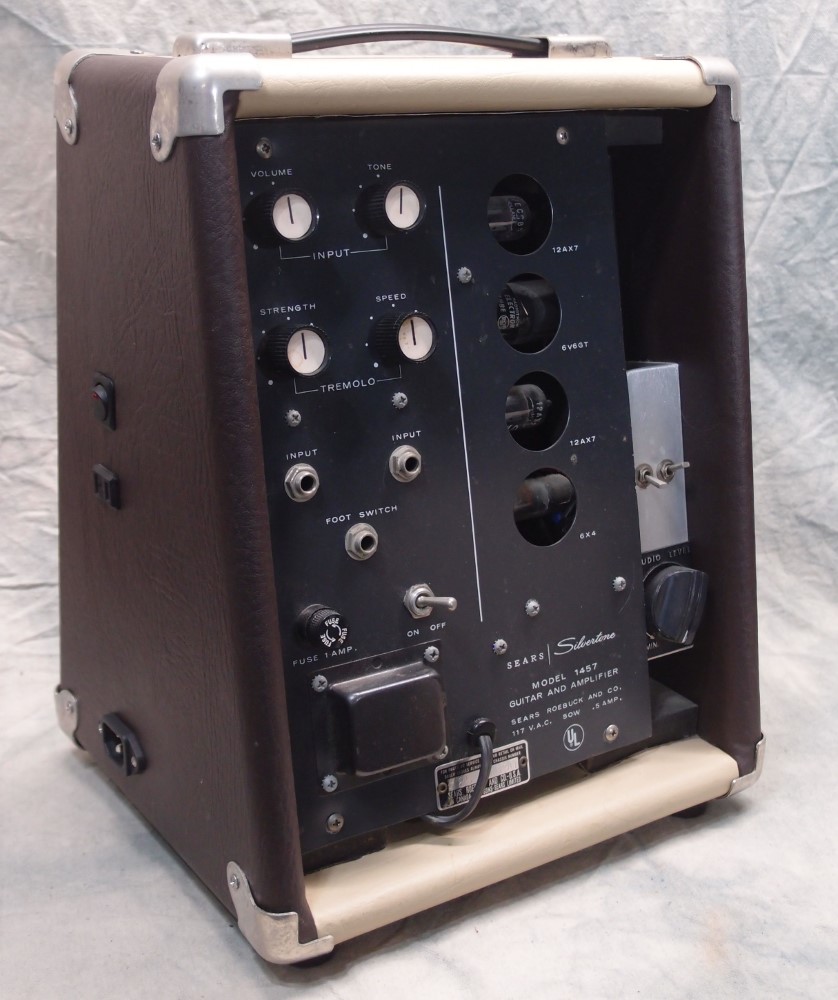
The extra panel at the right is an attenuator that I added. The first switch engages the big knob; the second switch engages an extra fixed stage of attenuation, see below.


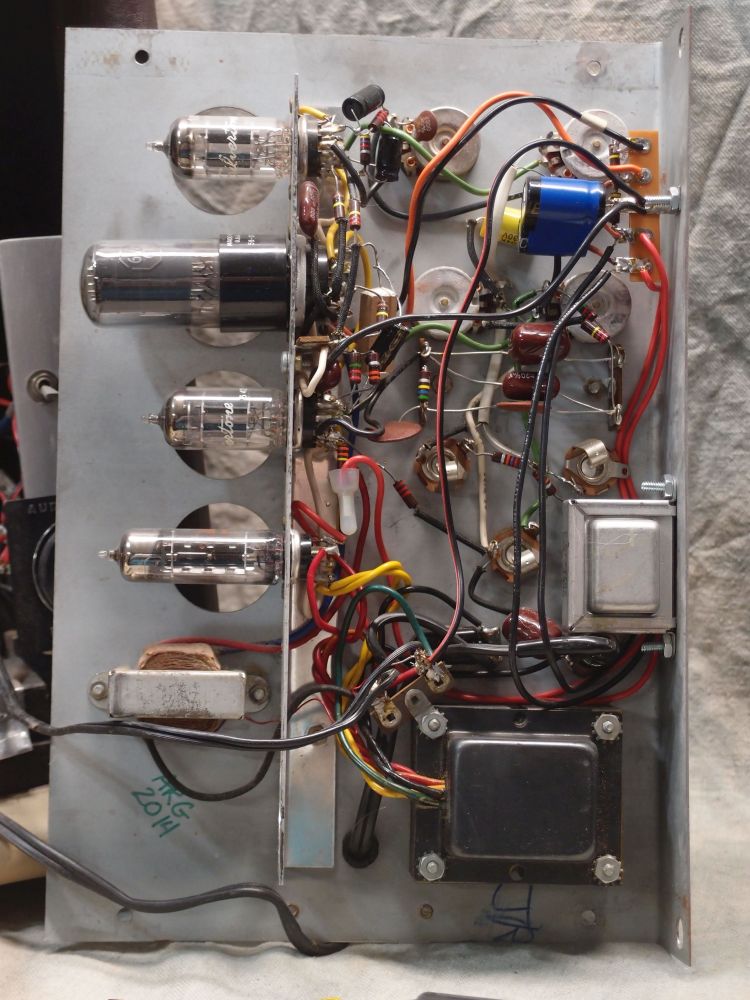
The big capacitors for the power supply are on a new terminal strip at the upper right; they were originally all in a metal can at the lower left, but you can't get those parts anymore. This amp is remarkably clean, but after fifty years, most of the capacitors and resistors will be shot, so I replaced everything. I'm not going to be silly and try to keep the inside of an amplifier "vintage" - any part that was suspicious got replaced. Three of the tubes are Silvertones, the 6V6GT is an RCA.
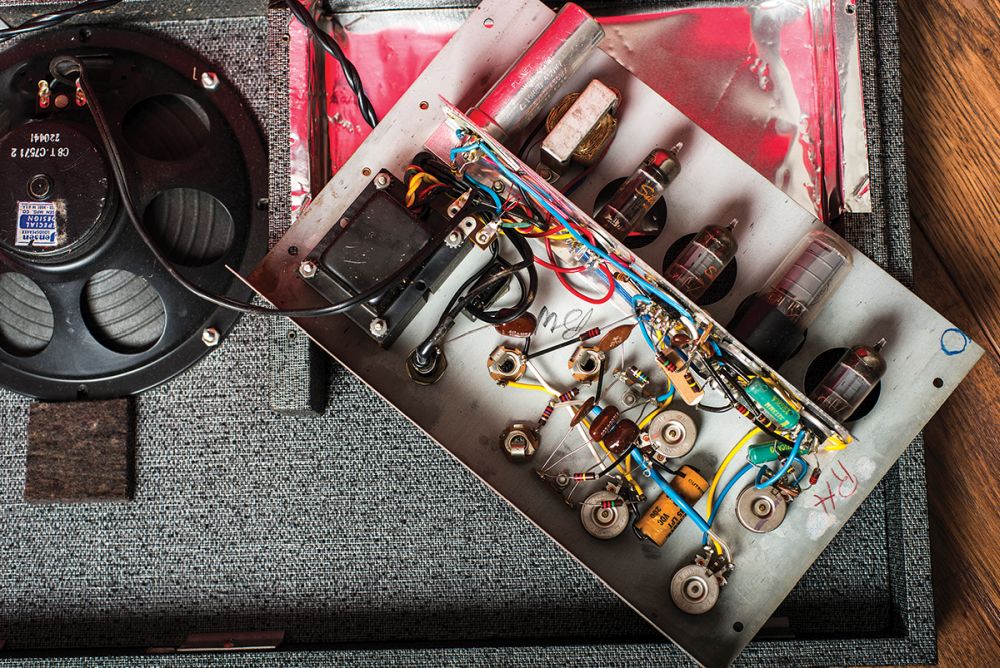
You can see the original power supply capacitor can at the top.
In the photo above, the amp is nearly stock, and you can see two of the original green Sangamo capacitors. Those were not great when they were new, and after sixty years, just replace all of them.
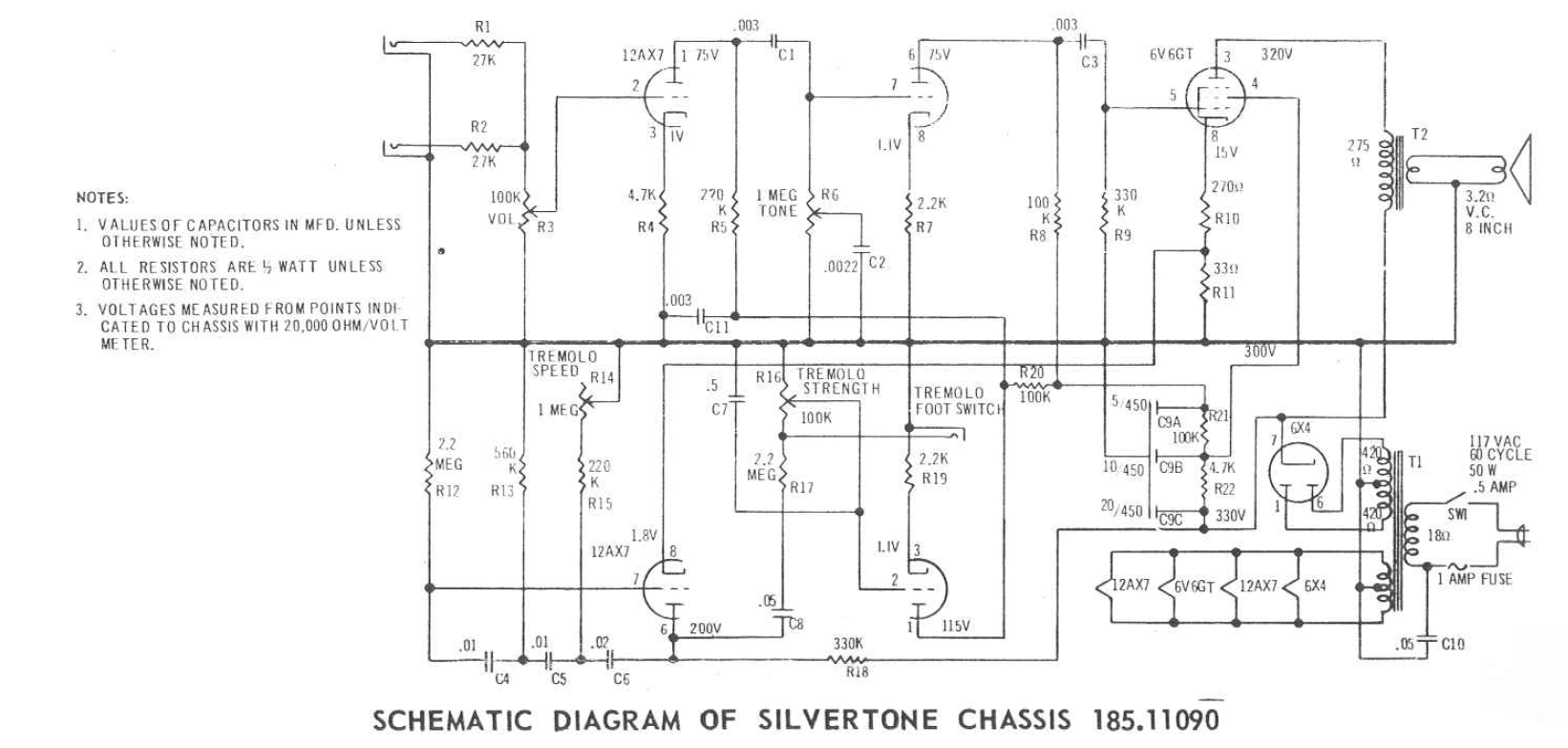
I also added a shiny new P-CF22707 choke to the power supply. The choke is inserted between the 6X4 rectifier tube (pin 7) and the first filter cap C9C, where the circuit diagram is labeled 330v. While that is not a tremendously expensive part, it is exactly the kind of thing that Danelectro would have left out as a cost saving. Finally, I converted the power cord to a modern 3-prong and removed the 'death cap' C10. I wish I had kept better notes when I was doing all this.
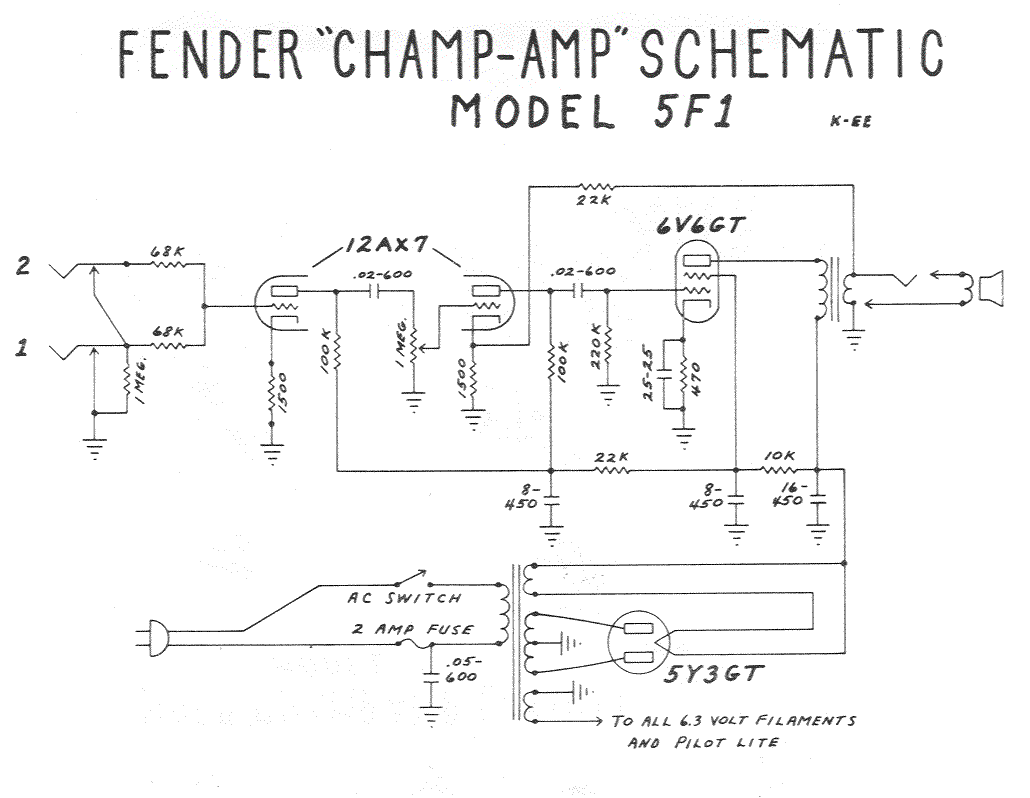
The Silvertone circuit is very similar to a Fender Champ ( which lacks the tremolo. ) The differences are mostly in the values of coupling capacitors and bias resistors. The Silvertone is a more conservative design, the Fender pushes the tubes harder and hotter. Danelectro may have de-rated the amp to run in the less-than-optimal ventilation of the guitar case.
Since I no longer have any ventilation/cooling issues, I decided to 'hot-rod' the Silvertone amp, substituting/adding the Fender-valued components for the stock ones. That made it a little bit louder, or maybe it is my imagination. ( Luthiery is largely imagination. ) Then I added an attenuator, so I can crank the amp up to distortion without getting evicted. It's a great little bedroom amp.




